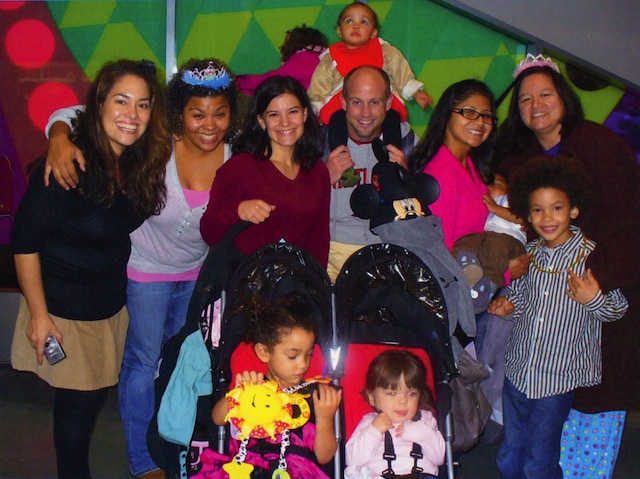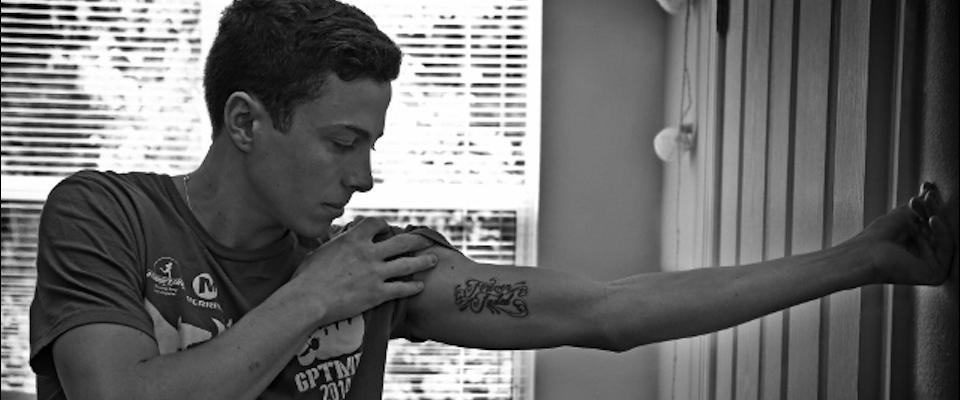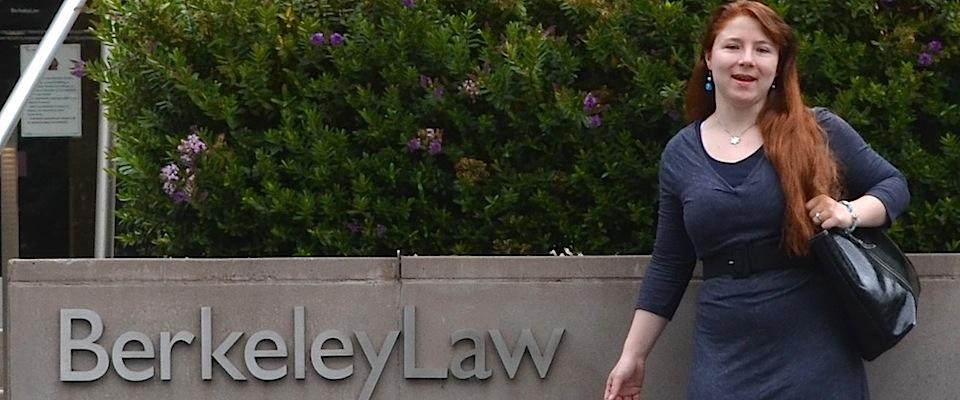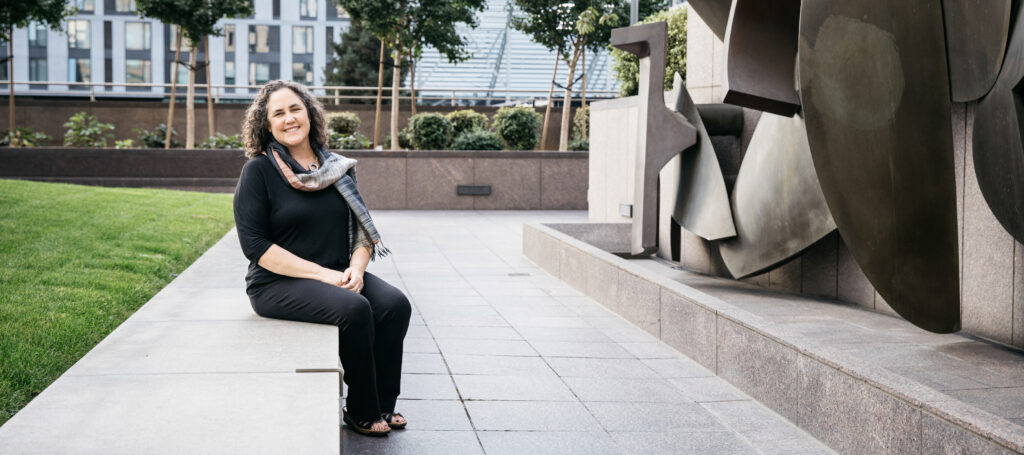Buried in the garages of suburbia are boxes of stuffed animals, worn-out sneakers, and abstract crayon drawings—the detritus of ordinary childhoods. The items in a new exhibit at Oakland’s Warehouse 416, “Lost Childhoods,” are a little different: a makeshift menstrual pad constructed from wads of toilet paper stapled together. Underpants from juvenile hall. A tattered bill of Monopoly money, with the phone number of a grandmother in Mexico scrawled on the back.
These items once belong to youth during their time in the foster care system, and they have been assembled into a rare exhibit that lays bare the workaday existence of foster children. The exhibit marks the public debut of a museum—the first of its kind—devoted to exploring the world of foster care.
Rather than memorializing the works of European Old Masters, the Foster Youth Museum specifically displays objects from living situations that offer little stability for youths and even fewer mementos, to raise awareness of an issue that often goes unremarked. The objects are “a testament to the resilience of foster youth and how far they’ve come,” says Jeanie Yoon, co-director of the museum who majored in sociology at UC Berkeley. With 50 artifacts, art and videos from former foster youth, it’s the largest collection of its kind.
Not all the items in the museum are inexpressibly sad. Another section of the exhibit displays GED certificates, college diplomas, and tender family photos. Another photo on display captures the lively collective family of two women who are featured in the museum—Jamie Lee Evans and Jennifer Rodriguez—and illustrates how a group of former foster youth chose each other and intentionally created a family “related by love.” They share holidays, celebrate milestone events, and support each other.

But “Lost Childhoods,” on display Saturday afternoon through March 29 or by appointment, tells neither an uncomplicated sob story nor a rags-to-riches narrative.
Former foster youth Haydée Cuza is now the executive director of a mental health organization in Oakland. She has a doctorate from UCLA, a happy marriage with her wife of five years, a daughter in law school, and a newborn grandson (featured in a photograph in the exhibit). Yet she still occasionally suffers nightmares from her time on the street as a homeless teenager. “Trauma is a lifetime thing—you don’t just ‘get over it,’” she says. “And we’re not statistics, not just anger and grief. We’re authentic beings.”
More than 60,000 young people are charges of California’s sprawling foster care system. There aren’t nearly enough foster parents, or social workers to train foster families, or funding for training programs. The state’s system is currently under investigation by the California Senate’s Human Services Committee over the rampant prescription of mind-altering drugs for teenagers, used to medicate them when they act out. One of the most insidious problems, says Jamie Lee Evans, co-director of the Foster Youth Museum, is that average citizens tend to regard foster care issues as the government’s problem or the social worker’s problem, rather than the responsibility of the community.
The museum’s exhibit aims to shake that complacency.
“I think it’s good to create a little bit of tension,” says Kevin Clark, an alumnus of the foster care system. “We get easily distracted—especially living in San Francisco, we have all this technology that takes us out of our current context and prevents us from recognizing the hidden things going on in our society.”
A photo of Clark hangs in the exhibit, a monochrome shot of him baring a small, calligraphic tattoo on his left bicep. At 16, he recalls, he was abusing drugs daily—especially after his legal guardian of 12 years, Laura, gave him up when his anger management issues became too much for her to handle. The tattoo, which reads “Forever Faded,” symbolized his commitment in that moment to a life of drugs and detachment, he says.
He’s not ashamed of his tattoo—when he catches people eyeing it, he sees a chance to broach the topic of foster care in ordinary conversation. “I know they want to ask about it, and I wish they would.”
But after his biological mother was abruptly incarcerated, “I was left with basically two options,” he says. “A, go into the streets, or B, get some help for drug addiction.” He chose the latter. After a couple of years in rehab and a stint in community college, he’s now a senior at the University of San Francisco studying philosophy, and hopes to work in public policy or advocacy after he graduates.
The “Lost Childhoods” exhibit is a product of the Y.O.U.T.H. Training Project, an Oakland-based effort to train former foster youths to, in turn, teach social workers how to handle their cases with understanding and sensitivity. Yoon says social workers are often stunned by how articulate the kids are. “What a lot of people expect from foster youth in a training room is a sad story, that they’ll stand up and make [the social workers] cry,” she says.
Instead, the youth lead the training sessions, with the staff on hand only to provide transportation and coaching. “We take our youth very seriously. We have very high expectations of them, and they need these expectations,” says Evans, who, along with managing the museum, is the director of the Y.O.U.T.H. Training Project and a former foster youth from LA County. “Lost Childhoods” was itself an outgrowth of the project’s work: Evans and her colleagues were developing a curriculum for child welfare supervisors when she noticed that they kept mentioning artifacts from their own lives as, essentially, object lessons for the foster care experience. Once assembled, the collection of items became a small traveling exhibition, accompanying Evans around the country for trainings and conferences. This is the first time it’s been accessible to the general public, and more than 1,000 people attended the exhibit’s opening. The plan is to take the museum on the road again.
“We’re really hoping to get people who don’t know much about foster care to realize they can be part of the solution,” Evans says. “It’s an opportunity for people to ask a lot of questions.”
Clark, for one, is ready and willing to open up. He’s not ashamed of his tattoo—when he catches people eyeing it, he sees a chance to broach the topic of foster care in ordinary conversation. “I know they want to ask about it, and I wish they would,” he writes in a post on the museum’s blog. “I’d love to talk about it.”




















